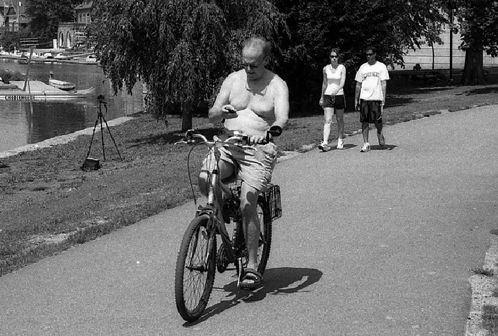“Solve the parts not the problem. Roll up your sleeves and start breaking things down into more accessible, smaller elements.”–Ethan Marcotte
Old Media resources used long paragraphs, small images (if at all), and required a reader’s full attention. The variety of devices that people use to consume web content has fragmented, along with their attention spans. Consumers of digital media demand short, visually-driven media that can be consumed while texting, watching TV, or even riding a bike (see photo below).
Ministry leaders seeking to convert or optimize old media into digital formats have to both break down these resources into smaller parts and find visual media (photos, video) to complement and even drive the formatting.
“The formula is target /context = result.”–Marcotte
Marcotte’s formula provides a practical means of making a plan for reformation. Spending the time thinking about the target will lead to effective tactics: another way of thinking about it is “where is this content going to be consumed, and what sort of limitations/capacity does this platform provide?”
Many field staff members of ministries use their smartphone to consume resources–a common mistake is retaining a small font size. Since it’s so easy to scroll on a smartphone and the screen size is small why not increase the font size to match the target and the context?
“Start from the barebones capabilities of small mobile devices first.”–Marcotte
While the creator and/or distributor of the resources would prefer that readers consume their resources on a large screen while sitting at a desk, table, or couch, many consumers actually consume the content while walking from one place to another on their smartphone. Starting with the smallest screen size will focus the reformatted resources and ensure they are not cluttered with superflous media.
What was the last online resource you consumed? What did it do well and where could it be improved?

